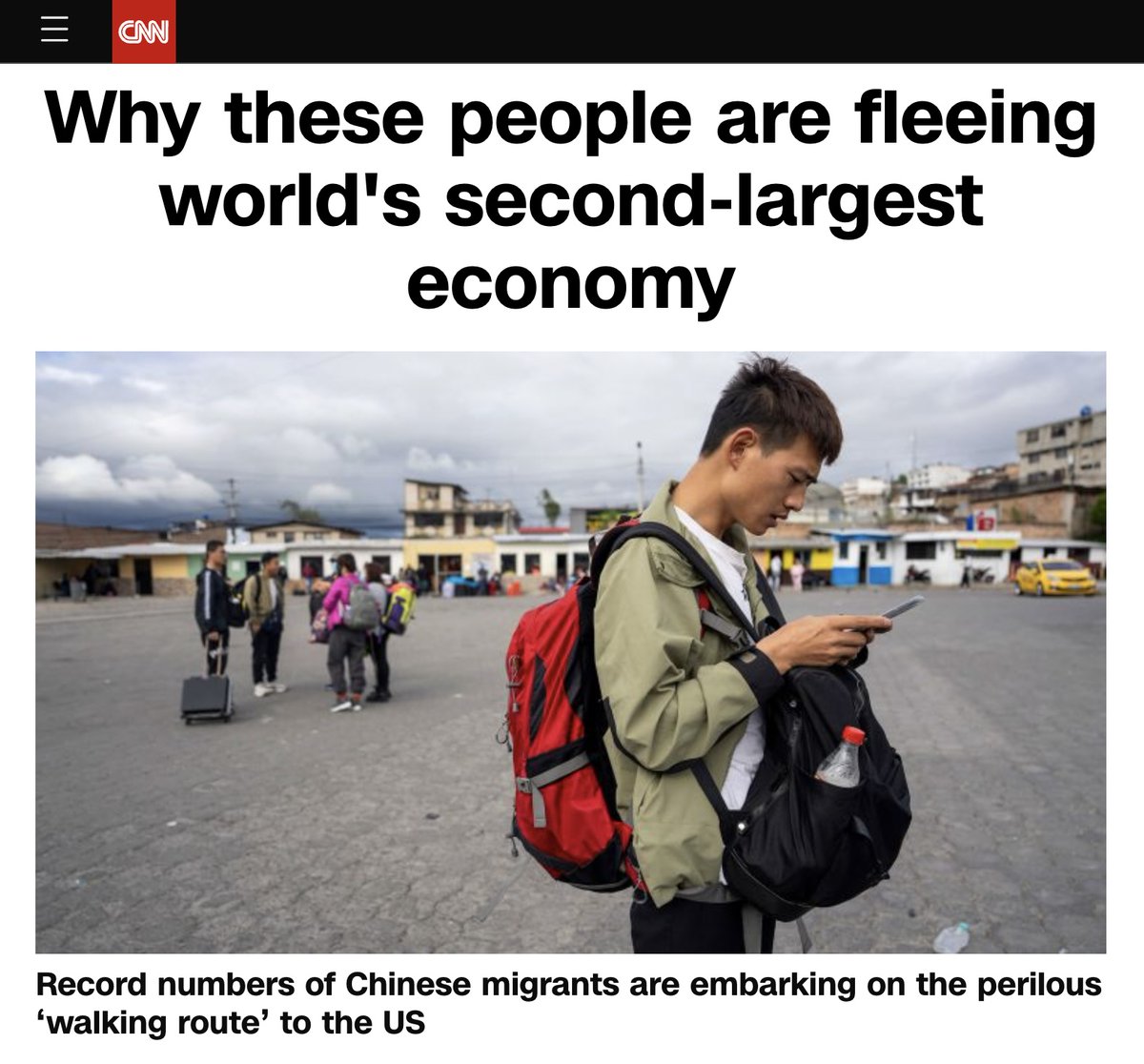CNN just published a months-long investigation by my colleagues and me about China building or expanding more than 200 specialized detention centers nationwide as Xi Jinping widens his corruption purge. #liuzhi #留置中心
Read our report & a thread (1/12): edition.cnn.com/2024/12/28/chi…
Read our report & a thread (1/12): edition.cnn.com/2024/12/28/chi…
Previously, China used an extralegal detention system called “shuanggui,” #双规 but after it set up the National Supervisory Commission (NSC) and expanded the emit of the party’s internal graft watchdog to the entire public sector, it adopted a new detention regime, named “liuzhi,” or “retention in custody.” #留置 (2/12)
Detainees of liuzhi can be held for up to six months without ever seeing a lawyer or family members. Even though the supervision law bans abuse and torture, but legal experts say the legislation only wraps a thin veil of legality around a detention regime that operates outside the judicial system, lacks external oversight and remains inherently prone to abuse. (3/12)
A criminal defense lawyer, who has represented Chinese officials in corruption cases, told CNN they had seen little improvement in the protection of detainees’ rights under liuzhi.
“Most of them would succumb to the pressure and agony. Those who resisted until the end were a tiny minority,” the lawyer said. “Many people eventually developed auditory hallucinations and felt like they were losing their minds.” (4/12)
“Most of them would succumb to the pressure and agony. Those who resisted until the end were a tiny minority,” the lawyer said. “Many people eventually developed auditory hallucinations and felt like they were losing their minds.” (4/12)
Between 2017, the year China set up local supervisory commissions as pilot programs before establishing the NSC, and November 2024, at least 218 liuzhi centers have been built, renovated or expanded across China to accommodate the new detention system, according to CNN’s review of tender notices and other government documents for these facilities listed publicly online. (5/12)

But the real number is likely much higher, as many local governments don’t publish tender notices online, or delete them after the bidding is finished.
Also, we found that more detention centers have been built, and more funds have been allocated, in provinces and regions with a higher percentage of ethnic minorities. (6/12)
Also, we found that more detention centers have been built, and more funds have been allocated, in provinces and regions with a higher percentage of ethnic minorities. (6/12)
Now non-members of the party can also be detained by the NSC. CNN has found that at least 127 senior executives of publicly listed firms – many of them private businesses – have been taken into liuzhi custody, with 3/4 of detentions taking place in the past two years alone. (7/12)

We found some very representative centers, for example the Shizuishan liuzhi detention center in Ningxia, the official heartland of the Hui Muslim minority, the original detention center built in 2018 next to the local prison and a rehab center was expanded this year, adding more detention cells, new interview rooms and staff dormitory. (8/12)

Bayannur of Inner Mongolia built its liuzhi detention center with a helipad in 2018 on the site of a special education school on the far outskirts of the city. An expansion project in 2021 doubled the facility in size and built a five-story office building for the local supervisory commission. (9/12)

Detention centers come with big budget. The liuzhi detention center in Zhangjiakou, Hebei, officially named the Clean Governance Education Base, costs 638 million yuan ($ 87 million) and features two detention buildings, two office buildings, and two buildings for “major cases.”
Dingxi, one of the poorest cities in the northwestern province of Gansu, spends 305-million-yuan ($42 million) to build a detention center to provide 32 detention cells and 542 rooms for investigators and guards to live on site. (10/12)
Dingxi, one of the poorest cities in the northwestern province of Gansu, spends 305-million-yuan ($42 million) to build a detention center to provide 32 detention cells and 542 rooms for investigators and guards to live on site. (10/12)

We also found the case of Chen Jianjun, an architect-turned-local official, who was detained for 6 months in 2022 in Xianyang. In Chen’s own drawings and handwriting diaries, Chen said he was only allowed to sleep 6 hours a day, from 0:00-6:00. He had to sit upright without moving or speaking for the reminder 18 hours. (11/12)

Chen also claimed he was deceived and forced into making false confessions of bribe-taking while detained under liuzhi. Chen’s wife committed suicide after being interrogated by the authority. In 2023, Chen was sentenced to 6 years in prison for accepting bribes of 2.5 million yuan ($340,000). He appealed and is waiting for a ruling. You can read more about Chen's story here: archive.ph/ulSro (12/12)
刚刚CNN发表了我和同事关于中国在全国范围内新建或者扩建了200余座留置中心的报道。这是报道原文,下面我会翻译之前的thread (1/12): cnn.com/2024/12/28/chi…

此前,中国在调查共产党关于腐败的时候会使用一种称为“双规”的拘留制度,作为党的调查手段,它并没有法律依据。但在2018年中国设立国家监察委员会(监察委)之后,监察委将党内纪检监察机构的监管范围扩大到整个公共部门后,采用了一个新的拘留制度,称为“留置"”。(2/12)
被关押在留置中心的人员最长可被拘留六个月,期间无法聘请律师或会见家人。虽然《监察法》禁止调查人员通过威胁和欺骗等非法手段收集证据,也禁止虐待或辱骂被留置人员,但法律专家表示,这项立法只是为一个缺乏外部监督、容易滋生虐待的拘留制度披上了一层合法性的薄纱。(3/12)
一位经常代理中国官员腐败案件的刑事辩护律师告诉CNN,TA没有看到留置制度下对被拘留人员权利保护有任何实质性改善。“大多数人都会屈服于压力和痛苦。能坚持到最后的人是极少数,”这位律师说。
“许多人最终出现幻听,感觉自己快要失去理智。” (4/12)
“许多人最终出现幻听,感觉自己快要失去理智。” (4/12)
但实际数字可能更高,因为许多地方政府不在网上发布留置中心项目的招标公告,或在招标结束后删除公告。此外,我们发现在少数民族比例较高的省份和地区,建造了更多的拘留中心,并分配了更多资金用于建设留置中心。(6/12)
我们发现了一些很有代表性的留置中心,例如宁夏石嘴山的留置中心位于,它建造于2018年,在当地监狱和戒毒所旁边。这个留置中心今年又进行了扩建,把原来的留置楼扩建到30个留置间,同时新建了谈话中心和食堂,并且把原本的戒毒所改造成了员工宿舍。(8/12)
内蒙古巴彦淖尔市在2018年在远郊一所特殊教育学校校址上的建造一个留置中心,很奇怪的是这个留置中心还有一个直升机的停机坪。2021年的时候,这个留置中心进行了扩建,整个项目的设施面积翻倍,并且建造了一栋新的五层办公楼。(9/12) 

这些拘留中心投入巨大。河北张家口的留置拘留中心,正式名称叫张家口廉政教育基地,耗资6.38亿元,设有2栋留置楼、2栋办公楼和2栋“重案楼”。
定西市,作为甘肃最贫困城市之一,投资了3.05亿元建造留置中心,提供32间拘留室和542间供调查人员和警卫居住的宿舍。(10/12)
定西市,作为甘肃最贫困城市之一,投资了3.05亿元建造留置中心,提供32间拘留室和542间供调查人员和警卫居住的宿舍。(10/12)

我们还发现了陈建军的案例。陈建军在2012年从政前是一位建筑师,他于2022年7月被留置了六个月。陈建军后来在卫生纸上画了自己被留置的经历:他每天只被允许睡6个小时,从12点到早上6点,其余18个小时必须端坐在椅子上,不允许动,也不允许说话,否则会受到守卫的责骂。(11/12) 

陈建军在手书的经历中写道,自己在留置期间被欺骗和强迫做出受贿的虚假供述。他的妻子也在被当局讯问后自杀。2023年,陈因受贿250万元(34万美元)被判处有期徒刑6年。他已提出上诉,正在等待裁决。您可以在这里了解他更多的经历:archive.ph/ulSro
• • •
Missing some Tweet in this thread? You can try to
force a refresh









